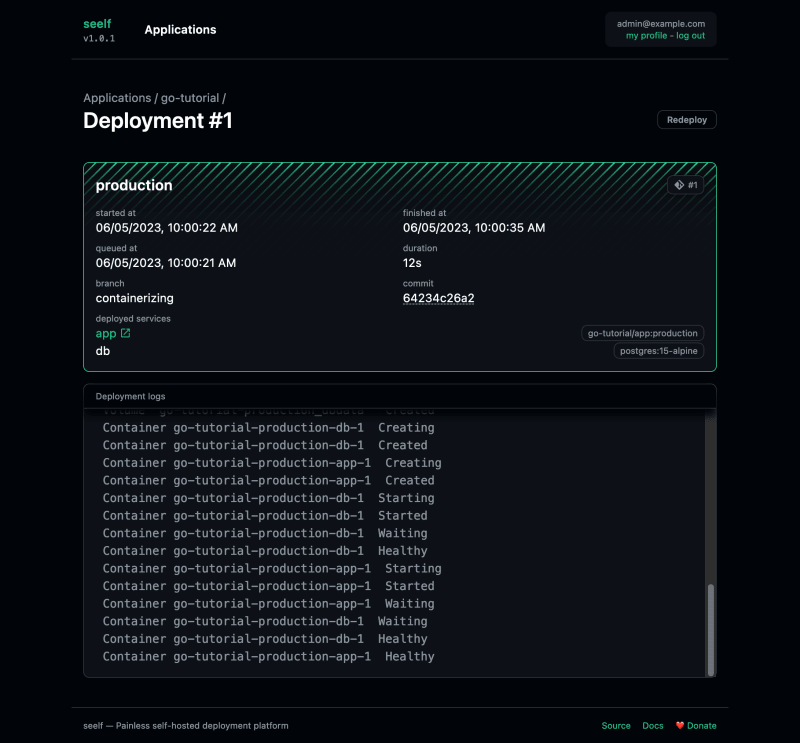Going from a locally running project to a remote deployment available to users can sometimes feel frustrating, especially if your needs are simple.
Today, I'll show you how you can take a tiny Golang application, containerize it using a Dockerfile and a compose.yml file, and deploy it without frustration using a tiny open-source project I've made: seelf.
First things first, our toy application
So you're a developer and you came up with a fantastic application idea: a tiny Golang application with outputs the number of times it has been started. To make things interesting, you also had decided to logs the application start time in a PostgreSQL database.
Note: This application is available at: https://github.com/YuukanOO/seelf-go-tutorial and each step has its own branch.
So you make this application, runs it locally with an instance of PostgreSQL and everything is fine, you're proud of you (and you should always be)!
Here comes Docker
As you know containerizing an application is a great way to deploy and share it easily, you come up with this Dockerfile:
FROM golang:1.20-alpine AS builder
WORKDIR /app
COPY go.* ./
RUN go mod download
COPY . .
RUN go build -ldflags="-s -w" -o sample
FROM alpine:3.16
WORKDIR /app
COPY --from=builder /app/sample ./
EXPOSE 8080
CMD ["./sample"]
And a compose.yml file to launch all your application stack in one command:
services:
app:
build: .
restart: unless-stopped
environment:
- DATABASE_URL=postgresql://dbuser:dbpass@db:5432/sample?sslmode=disable
ports:
- 8080:8080
depends_on:
db:
condition: service_healthy
db:
image: postgres:15-alpine
restart: unless-stopped
environment:
POSTGRES_USER: dbuser
POSTGRES_PASSWORD: dbpass
POSTGRES_DB: sample
healthcheck:
test: pg_isready -d $${POSTGRES_DB} -U $${POSTGRES_USER}
interval: 5s
timeout: 5s
retries: 5
volumes:
- dbdata:/var/lib/postgresql/data
volumes:
dbdata:
Now, you can run docker compose up -d --wait --build and your application is available at http://localhost:8080.
Going live with seelf
And now, you really want to share this amazing app with the world. Since you really like self-hosting, you have deployed seelf on a tiny VPS.
seelf is a lightweight self-hosting deployment platform written in Go which takes a compose file and deploy an application stack, exposing services at nice URLs and managing certificates so you don't have to.
So you start by creating an application on your seelf instance by clicking on the New application button.
You fill the provided form with a nice name for your application (as this will determine the subdomain used), the git repository url, and set production environment variables for the app and db services which will overwrite the default ones defined in the compose.yml file.
You click Create and on the next screen, the New deployment button will ask you what kind of deployment you want to trigger for your newly created application.
You choose git as the deployment kind since your application is hosted on github and enter the branch you want to deploy (containerizing in this example).
After a few seconds, the deployment should be complete and your application available.
Clicking the app link in the deployed services section of the deployment will open a new page to your live application!
Congratulations, you have successfuly deployed your first application with seelf!
seelf is in its early stage but you can check the roadmap to see what's planned. Thanks for taking the time to read this ;)








Top comments (0)